5 Things We Learned From New Federal Study: Massive Growth of Charters, No Difference in Student Performance From Traditional Schools
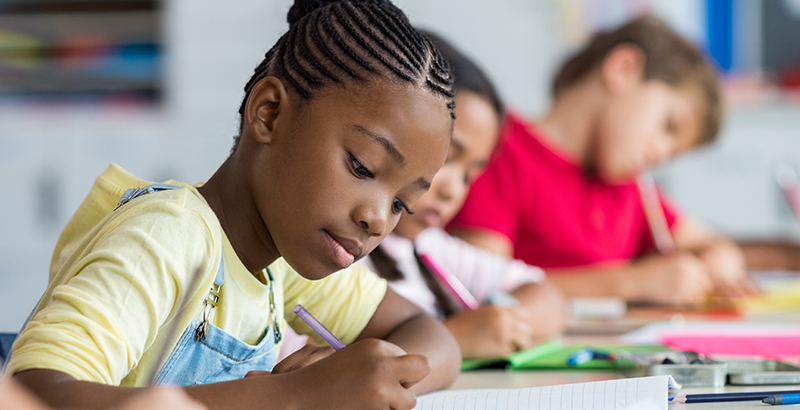
A new federal report released Wednesday offers crucial statistics about one of the most fiercely debated topics in education: school choice.
Politicians and advocates have called for moratoriums on creating new charter schools, and they were raised as one of the first K-12 topics in the Democratic debates — even if most of the candidates avoided the issue.
The report, from the National Center for Education Statistics, offered hard numbers on choice. It studied changes in enrollment in traditional public schools, charters and private schools, as well as homeschooling trends, including information on achievement and parental choice and satisfaction, over the past two decades.
One fact sure to rile education advocates of all stripes: Despite a fivefold increase in the charter sector between 2000 and 2016, the report found no meaningful difference in achievement between charters and traditional public schools.
Here are five key findings:
1 The type of schools students are attending is changing
Though most children in the U.S. still attend assigned public schools, a smaller percentage attended in 2016 than 1999, according to the report. It was a drop of 5 percentage points, from 74 percent in 1999 to 69 percent in 2016.
Meanwhile, enrollment in “chosen” public schools — an NCES designation that encompasses magnets, charters and traditional district schools outside of a student’s usual assigned one — has risen rapidly, as has the adoption of homeschooling. The percentage of students in private schools has remained largely stagnant.
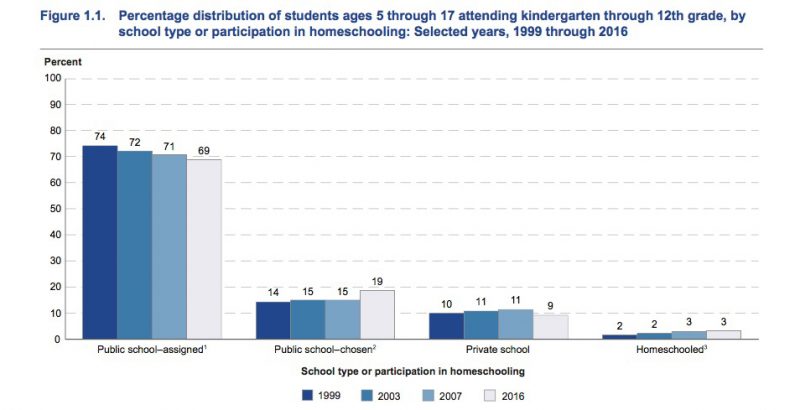
Charter school enrollment, in particular, grew rapidly during the study period, a 571 percent increase from fall 2000 to fall 2016. States with the highest percentage of students in charter schools as of fall 2016 were Washington, D.C. (44 percent), Arizona (17 percent), Colorado (13 percent), Utah and Louisiana (11 percent), and Florida and California (10 percent).
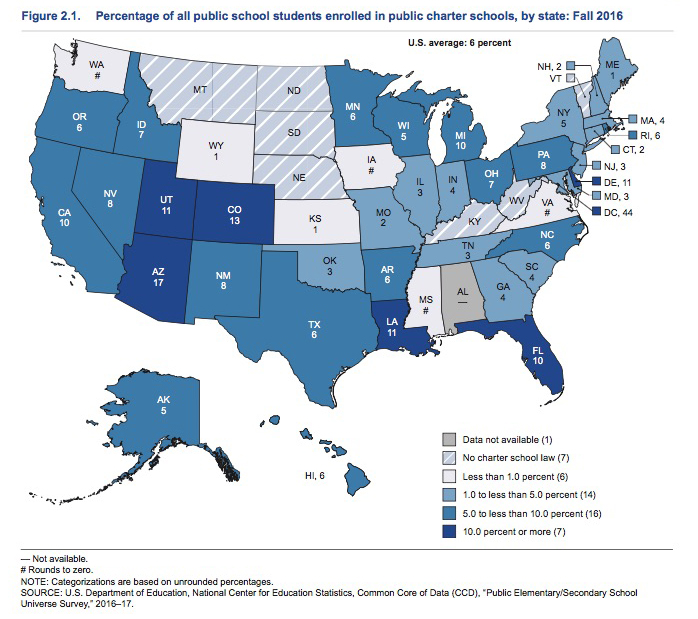
2 There is no measurable achievement difference between district and charter schools
Researchers studied the 2017 National Assessment of Educational Progress, the benchmark “nation’s report card” that fourth- and eighth-graders take every two years. They found no meaningful difference — and sometimes no difference at all — in reading and math scores at either grade level.
3 Charter schools are more diverse
Charter schools have more black and Hispanic students and more charters are considered to be “high poverty,” with more than 75 percent of students eligible for free or reduced-price lunch, a measure of poverty.
Public schools, for instance, were 15 percent black and 26 percent Hispanic, while charters were 26 percent black and 33 percent Hispanic. Traditional public schools also had higher concentrations of white students: 57 percent were more than half white.
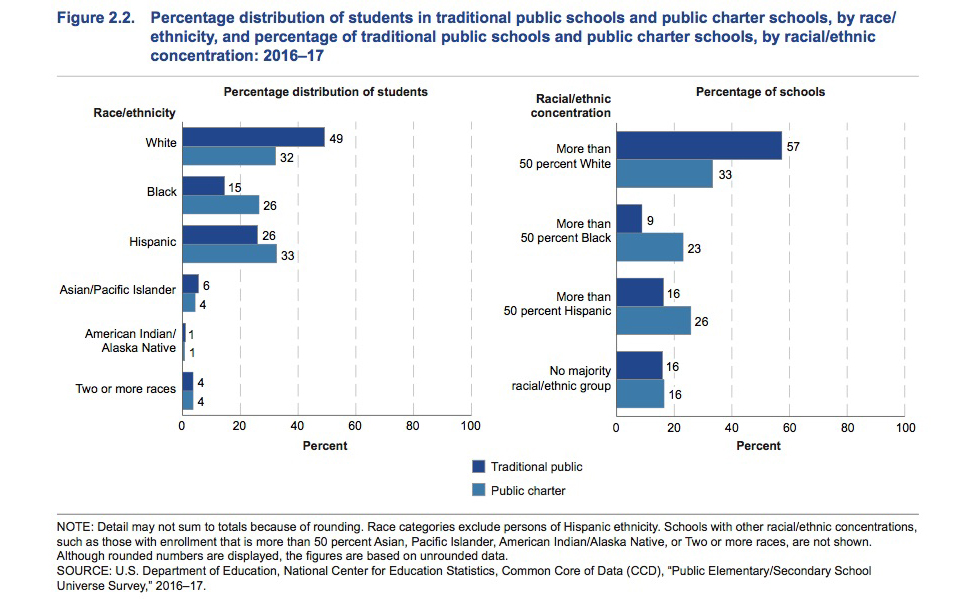
More than a third of charters, 36 percent, are considered “high poverty,” compared with 24 percent of district schools.
4 Students are reporting fewer safety concerns
The percentages of students in both public and private schools who reported knowing of a gang presence in their schools, seeing hate-related graffiti, being called a “hate-related word” or being bullied all dropped in the past decade.
In all cases, public school students were more likely to cite safety concerns. Both school types showed an overall downward trend for all safety issues, except bullying in private schools, which spiked and decreased several times during the studied period.
5 Parental satisfaction is higher in choice schools
Parents of children in private school were much more likely to report that they were “very satisfied” with schools overall and with various aspects of their children’s schools, such as teachers, academic standards, discipline and interaction with parents, according to data from 2016. (Homeschooling parents were not included.)
Parents of children in “chosen” public schools were also more likely to report being “very satisfied” than those with children in assigned public schools, though the gap was not as large between the two categories of public school as between the gap between private and public schools.
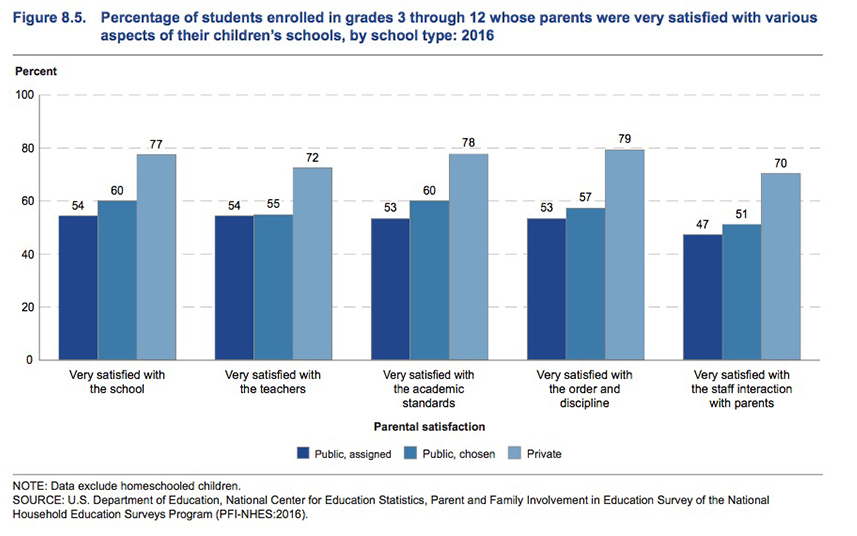
Get stories like these delivered straight to your inbox. Sign up for The 74 Newsletter

;)
